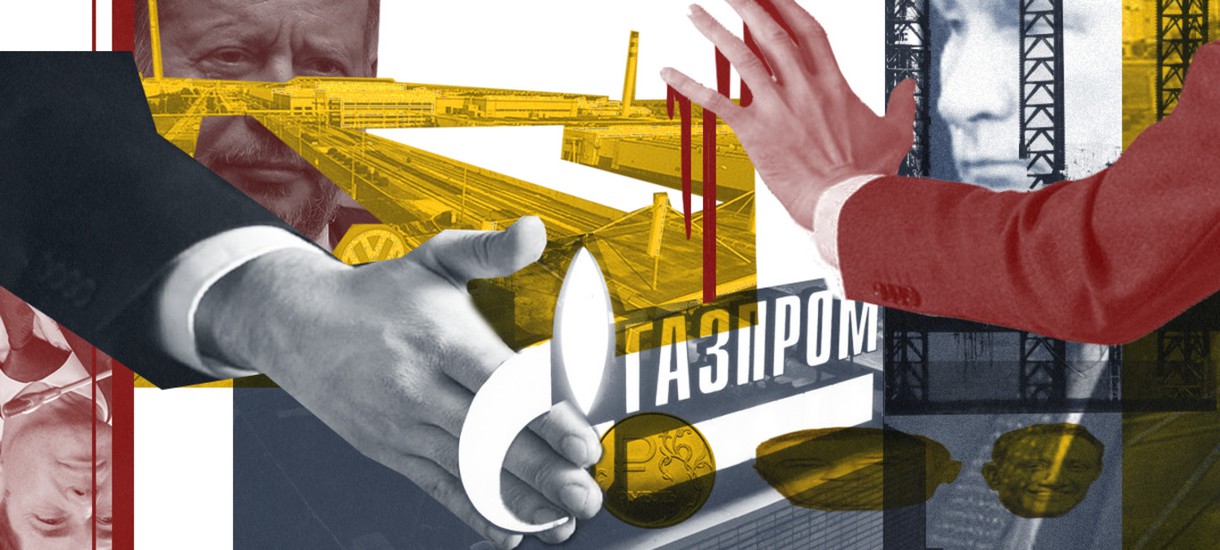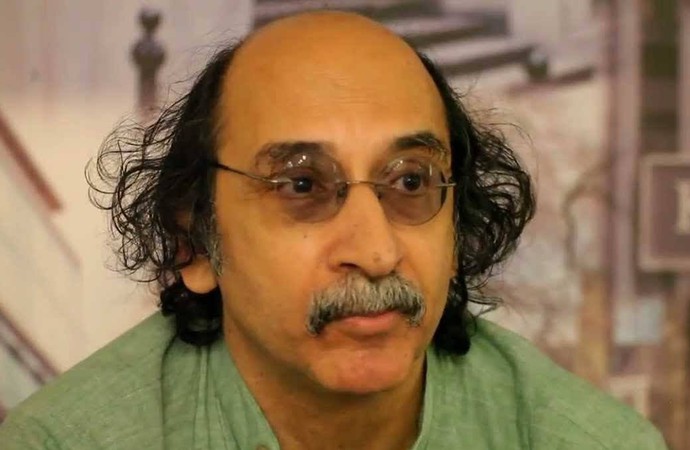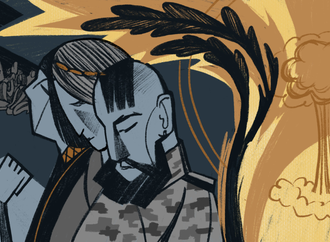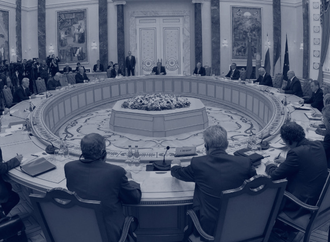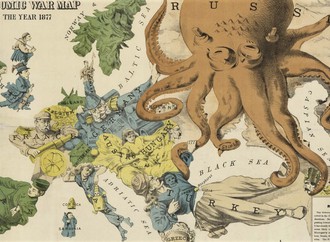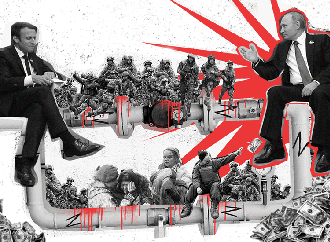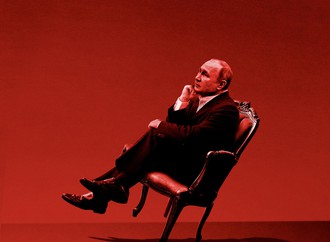The economic regime that has emerged in Russia has received a wide variety of characterizations and label forms. There are different terms from ‘state capitalism’ or various versions of ‘state capitalism’ such as Catherine Belton’s ‘hybrid KGB form of state capitalism’ to describe the regime under Putin, to Karen Dawisha’s ‘authoritarian kleptocracy’, Richard Sakwa’s ‘managed capitalism’, and of course, the term ‘crony capitalism’, the murdered American journalist Paul Klebnikov having consistently described Yeltsin’s oligarchs as ‘crony capitalists’.
My own preference would be ‘Kremlin-controlled capitalism’ but I want to take a different approach and try and get some sense of its peculiarities. At the theoretical level I can think of at least three frameworks for explaining the nature of Russian capitalism over the last two or three decades — Integrationism; Sectors of Capital; and the Primacy of Politics.
Integrationism first surfaced in a major way in the Soviet economic debates of the 1920s and was essentially the position Trotsky took, in contrast not just to Bukharin and others but also to Preobrazhensky, as Richard Day showed in his classic study. Trotsky believed it was impossible for the nascent Soviet state to industrialize without drawing on the resources of the world economy. More recently, it resurfaced strongly in the work that Stephen Hymer did on international companies and what is distinctive about them. Hymer’s position was partly incorporated in the way Bob Rowthorn framed the issue of imperialism in a stimulating piece published in New Left Review in 1971. Rowthorn asked which model of imperialism best described its likely nature in the decade that had just begun, describing these respectively as Superimperialism, Ultra-imperialism and Imperial Rivalry.
Hymer’s conception of the integration of the world economy being driven by a cross-penetration of each others’ domestic markets by the biggest firms in America, Europe and Japan fits best with the Ultra-imperialism model since this is the one that foregrounds the growing mobility and integration of capital against either overwhelming unilateral dominance or conflict-ridden rivalry between firms and their respective national states. In other words, economic integration across national boundaries presupposes peaceful relations between capitalist states.
‘Sectors of capital’ is an approach that partly derives from Hilferding in the 1920s when he drew a sharp contrast between firms in German chemicals and electrical engineering on one side, and others in heavy industry, to surmise that the earlier dominance of the steel and mining industries was now more or less over. It’s a perspective that shapes Sohn-Rethel’s analysis of the divisions within German capital from, say, the economic revival of the mid-twenties down to the depression and to Hitler’s seizure of power in 1933 and how these played out politically. Heavy industry was the backbone of the Harzburg Front, the informal coalition that leaned furthest to an authoritarian solution. I.G. Farben, by contrast, was the last major enterprise to extend formal submission to the Nazi state.
And finally, ‘Primacy of Politics’ is a concept we owe to Tim Mason, the exceptionally creative Marxist historian of Nazi Germany. It was first argued by him in the West German periodical Das Argument back in 1966. Reviewing Mason’s argument in 1970, Peter Sedgwick summed up its essential thesis by saying that National Socialism displayed a ‘primacy of politics’ in which ideological goals determined ‘the performance of the economic sphere so radically that the whole system cuts loose from any rationality of self-reproduction’. Mason himself traced this self-destructive, irrational mode of capitalist governance back to the disintegration of capital as a collective force, that is, as a class that was coherent and cohesive enough to determine at least those aspects of state policy that affected accumulation directly or indirectly. As he said, ‘The direct links between the economic and political elites became weaker than they had been in the Weimar Republic’. In Mason’s essay, the chief takeaway is the argument that under capitalism ‘there is always something irrational about the assertion of a primacy of politics’.
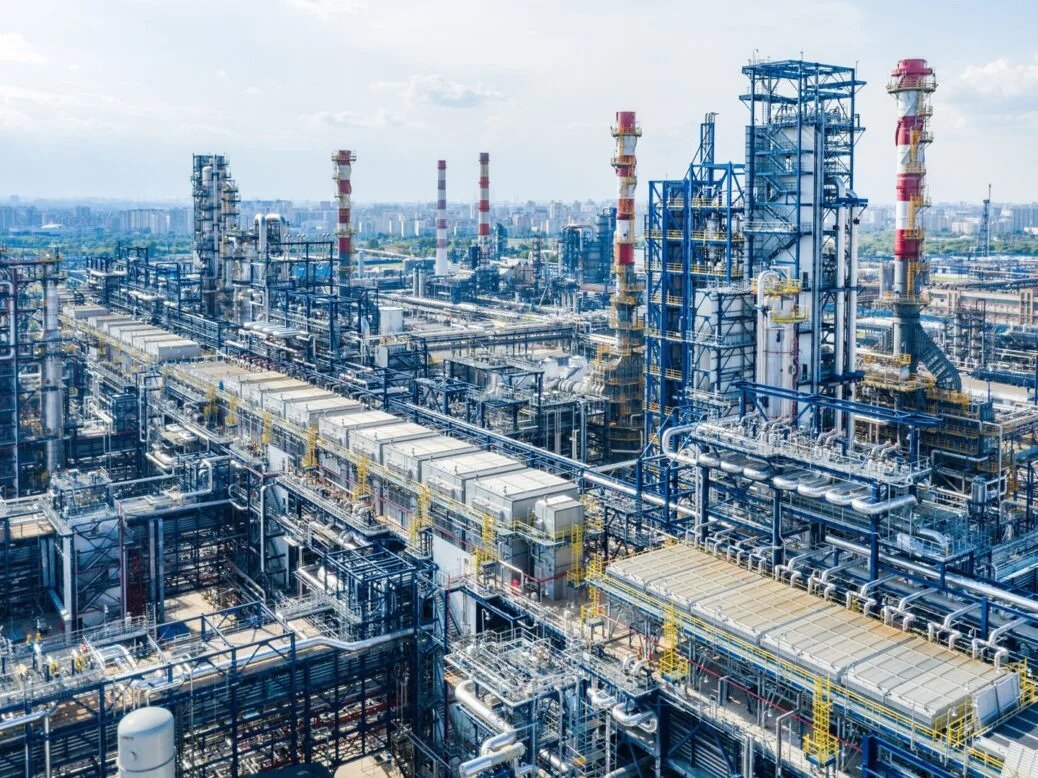
Gazprom Neft commissioned the EURO+ complex at the Moscow Refinery. Credit: Gazprom Neft PJSC
Let me illustrate each of these frameworks with the example of Russia to show why all of them are helpful. The global expansion of Russia’s energy giants illustrates a purely integrationist logic since profitability in the oil & gas sector is driven by an expanding presence in world markets. Poussenkova has shown this for firms like Gazprom and Rosneft. Here there is no question of imperialist rivalry in the traditional Marxist sense since expansion involves both a greater integration of the world economy as well as extensive collaboration between firms of different nationalities. Rosneft’s international alliances with firms like BP (for the Kara Sea) and ExxonMobil (for Sakhalin-I) are good examples of this. The second aspect, sectors of capital, is useful in explaining the major shift that occurred in the balance of power between private capital and the state as Putin promoted state corporations and recovered control of the oil & gas industry against the earlier dominance of the oligarchs. But the oligarchs or billionaires themselves were not a static group. The most powerful of them, Khodorkovsky, was destroyed by Putin after he was arrested and jailed in the mid-2000s, ostensibly on charges of tax evasion, while Rem Vyakhirev who ran Gazprom ‘as if it were his personal fiefdom’ (for example, his son managed the company’s export division!) was shunted out even earlier, in 2001.
On the other hand, many more billionaires would emerge in Russia in the 2000s and while the global financial crash destroyed many of those fortunes, especially in banking, the bulk of this class of capitalists could show a more diversified economic base by 2015 compared to the assets they owned in 2005. The earliest oligarchs had built their fortunes in hydrocarbons, metals and banking, largely through rigged auctions.
By 2015, however, real estate, trade, chemicals and telecom had all emerged as newer sectors of capital accumulation, while in the gas market independent producers linked to powerful oligarchs began to eat into Gazprom’s market share. Most large private-sector firms are run by dominant shareholders who use offshore companies to bolster their control. The late 1990s and early 2000s saw staggering levels of hostile takeovers which were simply coerced or violent seizures of capital assets that made up a corporate raiding industry in which state officials and businessmen worked closely together. It was estimated that in Moscow alone in the first half of 2005 there were 70 violent business takeovers. Primacy of politics can be illustrated by Chris Miller’s assertion that those oil & gas magnates who retained ownership of their energy assets did so by ‘ensuring that they satisfy the Kremlin’s political goals before pursuing their own financial self-interest’.
Now, this is an extraordinary feature of any capitalism, since accumulation is subordinated to the needs of the state. This of course was part of Putin’s vision, which was summed up in an official document in 2003 where it was said ‘The role of the country in the global energy markets largely determines its geopolitical influence’. Here it is impossible to separate the state’s political ambitions from the strategic economic decisions that are made by the oil &gas majors.
Or take an example that is particularly relevant now. A Reuters investigation into Russian customs documents revealed that Gazprom ‘sold more than 20 billion cubic metres of gas well below market prices’ to one Dmitry Firtash, a Ukrainian oligarch with close ties to the Kremlin, in the four years leading up to 2014. ‘The price Firtash paid was so low, Reuters calculates, that companies he controlled made more than $3 billion on the arrangement’. Other documents revealed that ‘bankers close to Putin granted Firtash credit lines of up to $11 billion…to buy a dominant position in the country’s (that is, Ukraine’s) chemical and fertiliser industry and expand his influence’. Firtash was a major financial backer of Yanukovich. The general point to emerge from this investigation was simply that ‘Putin uses Russian state assets to create streams of cash for political allies’, converting Gazprom into a tool of Russian foreign policy.\
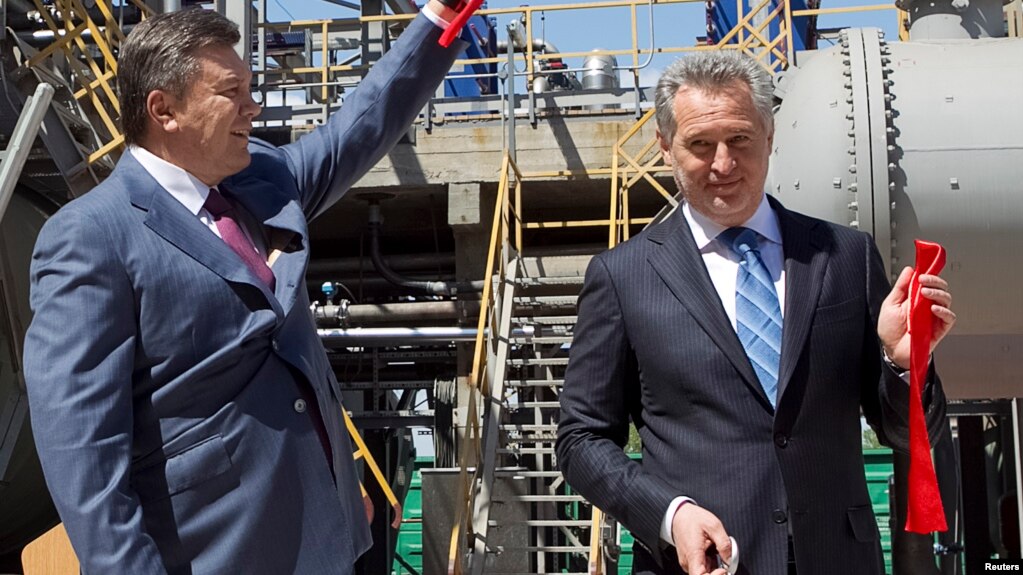
Ukrainian oligarch Dmitry Firtash and former President of Ukraine Viktor Yanukovych open a factory in Crimea
But to step back for a moment, between Gorbachev and the first shoots of a Russian spring and the storm clouds of the Second Chechen War that ushered in Putin’s own regime lay the catastrophic 1990s when state enterprises were sold for absurdly small sums as part of Chubais’ voucher-privatization scheme and the later scheme known as loans-for-shares, and Russia’s industrial wealth was auctioned off at ridiculously low prices as if an undervaluation of capital was one more lever of primitive accumulation to be added to Marx’s list in volume one. State-owned equity stakes worth $14 billion were sold to the oligarchs for less than $1 billion. Two particularly striking examples of this contrived undervaluation — Khodorkovsky’s acquisition of Yukos valued the company at $350 million ‘though it would have a market cap of $6.2 billion eight months later’!
So the privatization schemes were tantamount to theft, but it was a theft that reflected both the corrupt and predatory nature of Russia’s experiment with private capitalism (encouraged by the West) as well as the shambolic character of Yeltsin’s own regime, which was rife with criminality and consumed by the ‘pervasive corruption and incompetence’ that Paul Klebnikov exposed in his book Godfather of the Kremlin. The spree of mismanagement that allowed for such large-scale siphoning of state resources brought the economy to the brink of bankruptcy by the later 1990s, since the state had effectively given away the most profitable parts of Russian industry and forfeited its major source of revenue. At this level, Putin set out to reverse the relationship between state and capital by recentralizing the state (not least against the hold of regional governors), consolidating its command over business and enormously tightening his own grip over its various apparatuses, especially the security services that he sprang from. A key difference between Yeltsin’s regime and the one that followed is that Putin broke the political power of the oligarchs. This has two immediate implications. In the first place, it allowed for a new set of oligarchs to emerge and those who did never dreamed of challenging Putin’s authority. It also allowed the government to reestablish control over decisive economic sectors that had been usurped under Yeltsin.
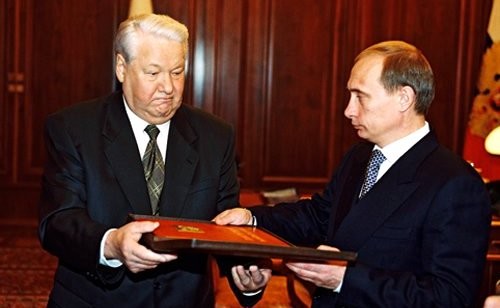
Yeltsin handing over the ‘presidential’ copy of the constitution to Putin at the end of 1999
However, nothing could be more misleading than to identify the twenty-odd years that Putin has been in power with a simple reassertion of state capitalism. This is where the challenge for a theory lies. For example, in Putinomics Miller refers to ‘oligarch-dominated state-owned firms in the energy and other key sectors’, which shows that state capitalism per se cannot be a sufficiently accurate description of the complex ways in which the private power of capital is articulated under Putin. To take the most striking case of this, the state corporations created by Putin are widely regarded as corrupt and badly managed. Thus ‘close associates of Putin run the biggest state companies, and they are responsible only to him’. Igor Sechin at Rosneft and Vladimir Yakunin at Russian Railways are good examples of these public-sector chief executives who treat state-owned companies almost as if they were their private property. Beyond them lies a charmed circle of businessmen who are old personal friends of Putin’s from his St. Petersburg days. They are said to have ‘become billionaires through preferential deals with the Russian government, mainly by receiving large no-bid procurement orders from Gazprom and by buying Gazprom assets cheaply’. Thus the only two builders of gas pipelines for Gazprom are both owned by close friends of Putin, members of his ‘inner circle’, on the one hand, the Rotenberg brothers, Arkady and Boris who are described as judo buddies of his, and on the other Gennady Timchenko. The Rotenbergs are said to ‘have made billions of dollars in contracts for Gazprom’, outside any competitive bidding process, and Gazprom is said to overinvest in pipelines that are not ‘commercially viable’.
The Sochi Winter Olympics was another project awarded to them, with Navalny’s foundation documenting numerous instances of corruption related to the Sochi construction projects. The massive bridge linking Crimea to Russia, the Kerch Bridge, is also one of Arkady Rotenberg’s projects, a multibillion dollar contract he won in 2015. Putin drove a Kamaz truck across the bridge as part of its official opening in May 2018. As for Timchenko, the other big supplier of gas pipelines and oddly enough a sponsor of the St.Petersburg judo club where Putin trained as a young man, his net worth is estimated to be $22 billion, which makes him the sixth richest Russian billionaire in the 2021 Forbes list. I mention this because one of the rare occasions that Putin has invoked a notion of ‘human rights’ was (bizarrely!) in connection with this plutocrat friend of his. In an extraordinary intervention, when the EU sanctioned Timchenko in April 2014, Putin rushed to his defence by complaining publicly of a ‘flagrant violation of human rights’ because the sanctions had frozen his wife’s bank account and credit cards and made it impossible for her to pay for surgery that she urgently needed. In Moscow, Timchenko lives in ‘one of the grand old Stalinist Politburo villas on the Sparrow Hills overlooking the capital’.
Of course, the power elite that Putin has built around himself is more complex than just his closest friends and starts with an inner circle of former KGB friends who have successfully seized control of the FSB, other security agencies and state apparatus more widely. And, as the former Swedish diplomat Åslund argues, at the other end of the financial flows that start with the corrupt management of both state and private enterprises are the bankers and authorities in offshore tax havens in the West who collude in laundering money for Putin’s various concentric circles, his so-called cronies.

Friend on Judo Arkady Rothenberg (far left) and Vladimir Putin in the open training in Sochi in 2019/ Getty Images.
The sheer scale of Russia’s flight capital (well over a trillion dollars on some estimates) makes kleptocracy an essential dimension of Russia’s capitalism, and as with countries such as India, for example, it would be impossible to study the way big business is structured and the way it functions without making this dimension pivotal to the nature of these economies. By definition, of course, flight capital reduces the mass of surplus-value available for accumulation domestically, and thus feeds into stagnation. Going after the offshore accounts of Russia’s oligarchs would mean prising open entire circuits of capital flight and capital circulation implicating other countries as well as the banking systems of the West.And we can be sure that this is not the kind of counterattack Biden or anyone else is ever likely to contemplate by way of sanctions. (Putin himself holds tens of billions of dollars of assets abroad and was visibly upset by the publication of the Panama Papers. Åslund guesses that he’s probably transferred anywhere between $100 to $160 billion into offshore accounts).
If Putin’s oligarchs made their fortunes from the state, then far from implying the sort of rivalry between state and private capital that dominated India’s industrial expansion in the fifties what this suggests is a symbiosis between two leading sectors of Russian capital, the new oligarchs on one side and the various state corporations in energy, transport, banking and arms production that were specially created by Putin, on the other. In her book, Putin’s Kleptocracy Karen Dawisha argued that when he came to power ‘Putin wanted the oligarchs to understand that they would have rents from these companies only as a reward for loyal state service. But for an oligarch loyal to Putin there would be no restrictions on the profits that could be realized’. This captures the deal perfectly and also explains why such formidable fortunes have been made and siphoned off in an incredibly short span of time. Loyalty meant that the oligarchs would have to stay out of opposition politics, which almost invokes Trotsky’s image of the still-born character of Russian liberalism and the defunct nature of Russia’s bourgeoisie.
Åslund’s recent book Russia’s Crony Capitalism frames Russian capitalism entirely through the prism of Putin’s inner circle and the corrupt deals that have enriched them, largely at the expense of minority shareholders in listed state firms such as Gazprom which have seen their market cap decline steeply. The distracting feature of this account, welcome as it is, is that it surely cannot be the whole of what Russia’s capitalism is about. Scholars like Ilya Matveev have tried to project a more independent role for Russian big business by underscoring the kind of corporatist bargaining that goes on between the ministries and the key business associations. For example, when presidential economic adviser Andrei Belousov recently proposed creating a special tax that would skim the ‘excess profits’ of the biggest exporters outside oil & gas, profits that he attributed to the devaluation of the ruble and high natural resource prices on the global market, saying it would yield half a trillion rubles in fresh tax revenues, the Russian Union of Industrialists and Entrepreneurs (RUIE), the leading business association, objected that it would simply lead to a ‘mass exodus of investors from the Russian market’ and the proposal was dropped.
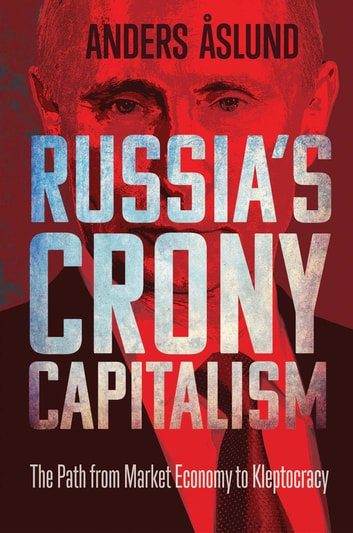
Concentrating on the so-called cronies throws little light on the mass of Russian big business, where the interesting issues are — who the capitalists are, which economic sectors they represent, how competitive their firms are in international markets, and how they deal with workers and consumers. One very rough way of starting is to see who Russia’s leading billionaires are today. Thus in Forbes’ latest list of the top 10 billionaires, Timchenko whom we’ve met and Alisher Usmanov, Russia’s largest iron ore producer, are the only capitalists who can really be said to have close personal ties to Putin. Pavel Durov, who created the messaging app Telegram in 2013, is the only high-tech entrepreneur in the list, while the rest are all connected with steel or with mining of one kind or another, if we make an exception for Vagit Alekperov, head of Lukoil, Russia’s second-largest oil company. The richest businessman in the top ten is Alexey Mordashov, a steel magnate and chief executive of Russia’s largest steel and mining company Severstal. What’s interesting about Mordashov is the way he reacted to his recent inclusion in the EU sanctions list. According to one news report, ‘Describing himself as being removed from politics, he called for an end to Russia’s war in Ukraine which he called a “tragedy of two fraternal peoples”. “It is terrible that Ukrainians and Russians are dying, people are suffering hardships, and the economy is collapsing. We must do everything necessary so that a way out of this conflict is found in the very near future and the bloodshed stopped”, he’s quoted as saying (Guardian, 2 March 2022). The third richest Russian on the Forbes list, also a steel tycoon, chairman of the NLMK group, Vladimir Lisin, expressed similar sentiments in March. In a letter to steelworkers, he wrote that the death of people in Ukraine is a ‘tragedy it is impossible to justify’ and urged Putin to find a peaceful diplomatic solution. The board of directors of Lukoil also broke ranks with Putin in issuing a call for an end to the war. These are voices from the very top end of Russian industry and they help to undermine cliched representations of Russian capital as entirely beholden to Putin. The Russian steel industry in fact is the one sector of manufacturing that has successfully created several world-class companies.
Russia’s steel industry is a typical oligopoly, with the top 5 producers accounting for 91% of total production in 2017. If Lisin’s company leads this group of steel capitalists, the second largest producer of steel is EVRAZ, a multinational owned by Roman Abramovich which employs some 70,000 people worldwide, 95% of them in Russia. Russian steel also depends crucially on export markets, which doubtless is why industrialists like Mordashov and Lisin are so worried about the impact of sanctions.
The rapid growth of Russia’s economy in the years from 1999 to 2008 was sustained by the oil boom and the state’s ability to tax a major share of the export revenue from the hydrocarbon sector. Oil and gas contributed 60% of Russian exports by 2005 and almost 40% of the central government’s tax receipts. The boom was absolutely crucial in giving Putin the ‘resources to rebuild the central state’s apparatus of coercion and control’, but also to stabilize the regime by widening its support base beyond the siloviki and his own immediate circles of the men from St.Petersburg, the Pitertsy. As Simon Pirani has argued, the rising living standards which came about in those years after their catastrophic decline and the wage repression of the 90s ‘were the main source of Putin’s popularity’. But the crisis of 2008 has since ushered in a long period of pressure on the economy, one marked by repeated stagnation, and of course, Putin’s wars (in Chechnya, Georgia, Syria and Ukraine) and the sanctions they’ve provoked when Ukraine was the target have done nothing to relieve that.
The depression was especially bad in the metallurgical regions which are typically characterized by one-company towns where the population depends crucially on a single, often struggling factory and where workers have in the past generally been successful in avoiding the closure of the dominant enterprise. (In 2016 some sixty percent of monotown residents were reported as finding their conditions of life unbearable, prompting the government to adopt a color-coded classification of such towns according to the degree of perceived risk in terms of the threat of social explosion. The worst off monotowns were described as the ‘red hundred’.) However, it’s the large steel companies that have broken this legacy pattern of firms safeguarding employment; as Stephen Crowley points out, they have begun to cut the number of workers substantially. Thus ‘in 2013, six major steelmakers were said to cut their payrolls by 33,500, reducing employment by over 9 percent’ compared to the previous year. All the same, many of the workers who are laid off by large companies are often simply reemployed in other enterprises of the company. Alexey Mordashov, the owner of Severstal, is quoted as saying, ‘I believe there’s a sort of social contract in many companies’. Being on the monotown list entitles communities to subsidies from the state and Putin at least has been careful to give the impression that he wishes these to continue.
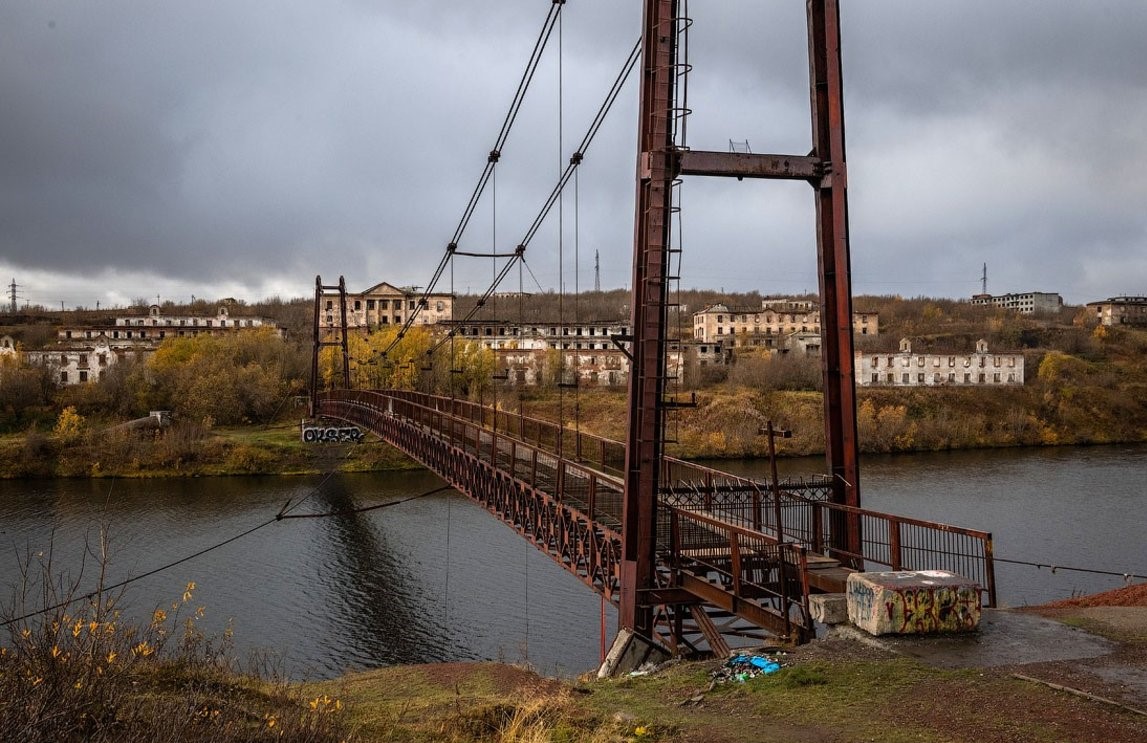
Vorkuta is a Russian monotown, in Soviet times one of the largest settlements located in the polar circle, over 30 years lost more than half of the population as a result of deindustrialization / Photo credits: Varlamov.ru
The Russian car industry was built by attracting foreign capital through import substitution. Once foreign models began to outsell Russian ones by 2006, the policy changed and there was a scramble for the Russian car market. Ford, Toyota and Nissan set up factories near St. Petersburg, and the leading Russian carmaker Avtovaz tied up with Renault, which invested more than a billion dollars in the project.
One of the most fascinating aspects of this influx of foreign capital is its impact on the unions. Quoting again from Crowley’s recent book, ‘The (new) policy also appeared successful for workers in the automobile sector, where one of the strongest alternative union organizations, the MPRA (Interregional Labor Union of Automobile Workers) was formed by workers from two automobile plants (Ford in Vsevolozhsk and AvtoVAZ) in 2006, just as the import substitution policy had begun. The MPRA led some of the most successful labor actions in Russia, such as the 2007 strike at the Ford plant, where workers halted production and barred entry to the plant, and by doing so won wage gains of 11 percent and a contract guaranteeing wage indexation of 1 percent above inflation. The Ford contracts became an inspiration for other workers in the industry, and the MPRA spread to other auto plants such as Volkswagen-Kaluga.’ By the 2010s the Russian car market was the second largest in Europe, slightly behind that of Germany, and Crowley notes that ‘As the outlook improved, autoworkers again went on the offensive.
For example, in March 2012, while the protests against electoral fraud were still taking place in Moscow and St. Petersburg, not far from Moscow workers at Benteler Automotive, an auto parts supplier for the Volkswagen plant, undertook a three-day strike that nearly shut down the VW plant, in order to gain recognition of their MPRA affiliated union’. However, the collapse of the oil boom in 2014 again pushed the car industry into a deep crisis and of course, the recent sanctions have meant the withdrawal of foreign firms. On the other hand, as the MPRA expanded to cover other industrial sectors and called itself the Inter-Regional Trade Union Workers’ Association, the authorities took court action to have the union declared illegal in the run-up to Putin’s 2018 reelection campaign, but the Supreme Court has overturned that ruling.
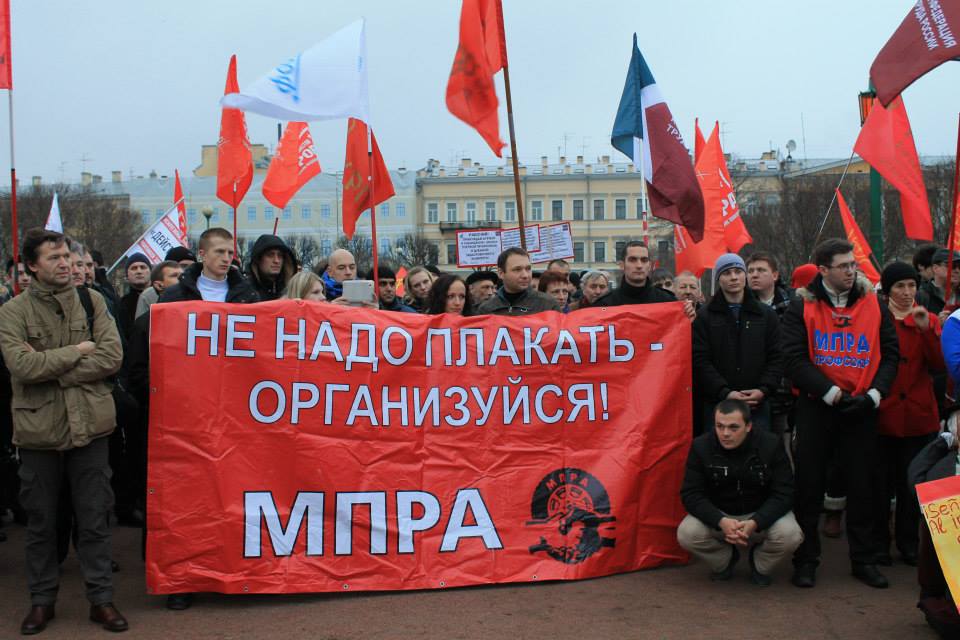
Protest of the MPRA (Interregional Labor Union of Automobile Workers). The poster says, "Don't cry, organise" / 7x7-journal.ru.
***
I’d like to end by describing what I see as the essential conflict at the heart of Russia’s economy. To do this I need to juxtapose two of the themes I outlined at the very start. The conflict between economics and politics is expressed as a clash between the integrationist logic of capital and the ‘primacy of politics’ encapsulated in Putin’s statism. This conflict was most dramatically expressed in the drive to destroy Khodorkovsky’s control of Yukos and absorb the best parts of the company into the state-owned ‘national champion’ Rosneft which, like Gazprom, was simply a cash-cow for Putin’s geopolitical ambitions. The very selection of Igor Sechin as head of Rosneft shows this since he was ‘the unofficial leader of the silovik wing of the Kremlin elite’, as Gustafson describes him, and someone who, like Putin, was part of the KGB cadre in the mid-1980s.
Here it’s useful to use Sartre’s notion of ‘incarnation’ to get some sense of the importance of figures like Khodorkovsky, Sechin and Putin. Yukos was Russia’s largest and most aggressive private-sector oil company, its owner an unabashed defender of a modern, globally integrated capitalism who was increasingly seen in the West as a corporate governance role model. As Catherine Belton says, ‘Of all the Moscow oligarchs, Mikhail Khodorkovsky was the one most actively seeking to integrate his company into the West, most openly courting Western investors and leaders for support. He was leading the way in trying to instil Western corporate governance methods and transparency at his company, after years of being a bad boy of Russia’s Darwinian business scene. The conflict that unfolded as Putin’s siloviki fought to wrest away Khodorkovsky’s control of Yukos’s west Siberian oilfields was at once a clash of visions for Russia’s future, and a battle for empire. It was to define Russia’s imperial resurgence and Putin’s efforts to restore his country as an independent force against the West. But it was also a clash that was deeply personal’. It is perfectly obvious that Putin and Khodorkovsky detested each other not in some purely personal sense but for what each represented to the other. Khodorkovsky was outspoken to the point of arrogance, often attacked the state officials in the media, and was not easily beaten into submission even when the attempt came from Putin. Belton reports that ‘He was pouring tens of millions of dollars into funding the Communists’ and that two of the top executives from Yukos ‘headed the Communist Party candidates list’. His funding of opposition parties in the Duma clearly rankled with Putin. It is reported that in May 2003 at a private dinner that he and Abramovich were asked to come to, Putin ordered him to ‘stop funding the Communists’, but Khodorkovsky is said to have flatly refused, apparently saying that ‘the support of democracy in Russia was just as important as the business’. Later, in July that year, Putin told the prime minister Mikhail Kasyanov that ‘Khodorkovsky had crossed a line by financing the Communists without his permission’.
In his brilliant book on the Russian oil industry Wheel of Fortune, Thane Gustafson has a long and vivid description of the various issues over which Putin and the oil executive had fiercely opposed views and clashed publicly, including a pipeline to China that Yukos was strongly in favor of against Putin’s idea of a line that would extend thousands of miles further directly to the Pacific Coast, an idea that Khodorkovsky publicly mocked. And then there was the plan of merging Yukos with Chevron to create the world’s largest oil company.
Given the role of institutional investors in world capitalism today, no big business can hope to access capital markets internationally unless it complies with benchmark disclosure standards and levels of transparency that make minority shareholders and international creditors ‘comfortable’. It has been said (in Khodorkovsky’s case) ‘one wonders if a little less transparency might not have been wiser’. By contrast, the governance structures of the state companies and corporations are far removed from anything that would be remotely acceptable in terms of international best practices. Thus the boards of the state corporations and companies are appointed by Putin, and their chief executives are his men, answerable only to him, so that even state, that is, public control is a legal fiction. In Gazprom’s case, this sort of governance culture has led to what one writer describes as ‘seventeen years of disastrous management’, while Yakunin’s control of Russian Railways in the years 2005-2015 reeked of corruption, Navalny making him a prime target of his exposés. The sprawling defence conglomerate Rostec was the creation of Sergei Chemezov, who’s been friends with Putin since their KGB days in East Germany. As one critic has written, ‘Rostec doesn’t publish any financial reports, annual reports, or other detailed information about its business. This vast business empire of often secret companies is a nontransparent maze…it abandoned its website in English in 2018… Rostec makes one thing clear, its dependence on the president: “The Rostec Corporation is governed by its super-visory group, executive board, and general director, who is appointed by the President of the Russian Federation.” But the wider issue here is which pattern capitalism evolves by – in other words, either the state services capital accumulation (this is, if you like, the standard pattern linked to liberal democracies that are dominated by powerful corporate interests), or accumulation services the state (this is the non-standard, statist-authoritarian pattern reminiscent of what Tim Mason called ‘the primacy of politics’ and is exemplified as much by the Saudis under Muhammad b. Salman as by Russia under Putin).
There are of course different senses of the expression ‘primacy of politics’, some stronger than others. For example, when one writer states that ‘Government-owned firms are managed with political goals in mind’, that is one obvious but weaker sense of the term. It introduces a radical heteronomy into the heart of the accumulation process since some of the largest firms are restrained from functioning as purely capitalist enterprises. However, there is a much stronger sense of primacy that is strikingly evident in the wars Putin has waged both in Syria and Ukraine. For example, when Russian troops annexed Crimea this was the result of a decision that Putin could not have shared more widely than with a narrow circle. It is clear that the ministry of finance hadn’t been consulted. Deputy Finance Minister Tatyana Nesterenko claimed at the time, ‘The Ministry of Finance was not asked in advance about the possible price of the decision on the accession of Crimea’. And of course, the massive sanctions that have now swept over Russia will do major damage to the economy and the lives of its population.
Thus Putin’s wars undermine the interests of big capital as a whole. The question is—does Putin care? The last few years have seen an erosion of the ‘Putin majority’, as Budraitskis calls it, and this could well be one factor in the decision to unleash war on Ukraine. But as the war machine is mobilized, so is the machinery of repression, which means even worse authoritarianism than most ordinary Russians have seen in the period since 2011.
If the minority liberal sector of Russian capital failed spectacularly in its confrontation with Putin, what about the working class? As oil and gas production replaced coal as the backbone of Russia’s economy, this weakened the structural position of industrial workers, Stephen Crowley argues in his book Putin’s Labor Dilemma. Like working classes worldwide, it has to build more powerful union organizations before it can start flexing political muscle, but it’s worth noting that in Belarus, in the mass demonstrations of 2020, workers formed strike committees in leading state-owned enterprises and were a conspicuous part of the movement against Lukashenko, with demands denouncing his rigging of elections and police brutality. This was Lukashenko’s ‘traditional constituency’ rising up against him and he was visibly shocked. The lesson here is that workers acted as part of a wider mass struggle for democracy, as indeed they did in Egypt in 2011. So that leaves the Russian grassroots opposition which has partly coalesced around Navalny.
The fate of the war in Ukraine will be crucial to Putin’s future. But the least it has shown most sectors of Russian society that don’t buy into the Kremlin’s absurd propaganda about Russia’s territorial integrity being under threat is the sheer irrationality and almost genocidal brutality the regime is capable of in perpetuating the political lifespan of its president and of the corrupt circles that have the greatest stake in his continued rule.
If one is looking for a purely economic explanation of why Putin has invaded Ukraine twice in the past 8 years, consider the fact reported by Rupert Russell in his book Price Wars that ‘In 2012, enormous gas reserves — 2.3 trillion cubic metres — were discovered under Ukraine’s share of the Black Sea. Russia tried to negotiate access to the deposits, but the talks fell through. Then in January 2013, Ukraine struck a deal with Royal Dutch Shell to start drilling in Eastern Ukraine, where another major deposit of natural gas had been discovered’. So much so that the Ukrainian energy minister apparently said that ‘Ukraine would become a net exporter to Europe — competing with Russia — by 2020’.
